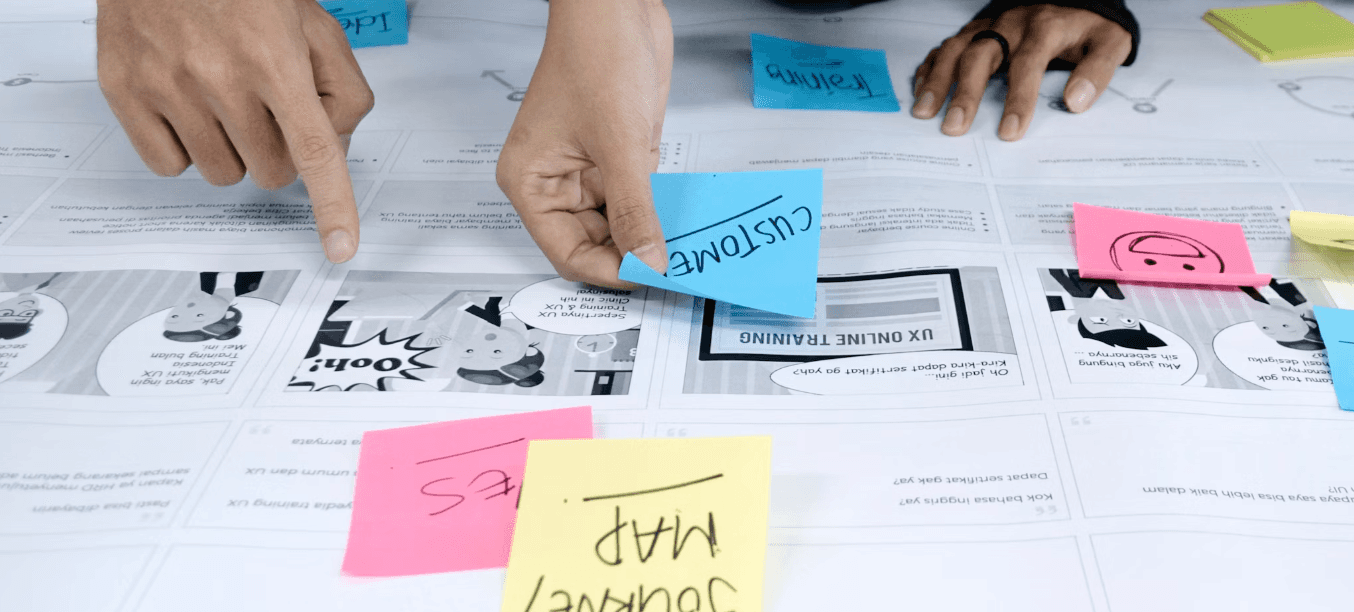3
min to read
Mar 7, 2024
In the dynamic landscape of digital marketing, understanding and mapping the customer journey is essential for businesses looking to engage with their audience effectively and drive conversions. Email marketing and push notifications are two powerful tools that play a crucial role in guiding customers through the various stages of their journey, from awareness to purchase. This article will explore how businesses can map the customer journey using email marketing and push notifications, highlighting strategies to engage customers at each stage and drive them towards making a purchase.
Understanding the Customer Journey
The customer journey encompasses the various touchpoints and interactions a customer has with a brand from the initial awareness stage to the final purchase and beyond. By mapping out the customer journey, businesses can gain insights into customer behavior, preferences, and pain points, allowing them to tailor their marketing efforts to meet the needs of their audience effectively.

Stage 1: Awareness
Email Marketing:
Welcome Emails: Introduce new subscribers to your brand, products, and services.
Educational Content: Provide valuable content that educates and informs subscribers about your industry or offerings.
Promotional Offers: Offer exclusive discounts or promotions to incentivize engagement and drive interest.
Push Notifications:
Announcements: Notify users about new products, services, or updates to generate interest.
Content Teasers: Tease upcoming content or product launches to build anticipation.
Event Invitations: Invite users to webinars, events, or exclusive experiences to engage with your brand.
Stage 2: Consideration
Email Marketing:
Product Recommendations: Recommend products based on user preferences or browsing history.
Customer Testimonials: Share testimonials and reviews to build trust and credibility.
Comparison Guides: Provide comparison guides to help users make informed purchase decisions.
Push Notifications:
Abandoned Cart Reminders: Remind users about items left in their cart to encourage completion of the purchase.
Limited-Time Offers: Create a sense of urgency with limited-time offers or flash sales.
Product Updates: Notify users about new features, updates, or enhancements to keep them engaged.
Stage 3: Decision
Email Marketing:
Personalized Offers: Send personalized offers based on user behavior and preferences.
Free Trials or Demos: Offer free trials or demos to help users experience your product or service.
Customer Success Stories: Share success stories from existing customers to showcase the value of your offerings.
Push Notifications:
Exclusive Discounts: Offer exclusive discounts or deals to incentivize purchase.
Product Launch Alerts: Notify users about new product launches or updates to generate excitement.
Social Proof: Share social proof such as reviews, ratings, or testimonials to build trust and credibility.
Stage 4: Purchase
Email Marketing:
Order Confirmation: Send order confirmation emails with details of the purchase.
Shipping Updates: Provide shipping updates and tracking information to keep customers informed.
Post-Purchase Surveys: Gather feedback from customers to improve the overall shopping experience.
Push Notifications:
Order Updates: Notify users about order status updates, shipping information, or delivery confirmations.
Reorder Reminders: Remind users to reorder products they have purchased in the past.
Cross-Sell Recommendations: Recommend complementary products or accessories to enhance the purchase experience.
Strategies for Effective Customer Journey Mapping
Segmentation: Segment your audience based on behavior, preferences, and lifecycle stage to deliver personalized messages that resonate with specific user segments.
Automation: Utilize automation tools to schedule and send targeted messages at optimal times based on user actions and behavior.
Integration: Integrate email marketing and push notifications into an omnichannel strategy to deliver consistent messaging and experiences across multiple touchpoints.
Personalization: Personalize messages with user data, preferences, and past interactions to create a tailored and engaging experience for each customer.
Testing and Optimization: A/B test different variations of messaging, visuals, calls-to-action, and timing to optimize campaign performance and drive better results.
Analytics and Insights: Analyze performance data, track key metrics, and gain insights into customer behavior to refine your strategies and improve engagement levels.
Conclusion
In conclusion, mapping the customer journey from awareness to purchase with email marketing and push notifications is a strategic approach that allows businesses to engage with their audience effectively, drive conversions, and build lasting relationships with customers. By understanding the various stages of the customer journey and tailoring messaging to meet the needs and preferences of users at each stage, businesses can create a seamless and personalized experience that guides customers towards making a purchase. By implementing segmentation, automation, integration, personalization, testing, optimization, and analytics strategies, businesses can enhance their customer journey mapping efforts, improve engagement levels, and drive success in their marketing campaigns using email marketing and push notifications.




